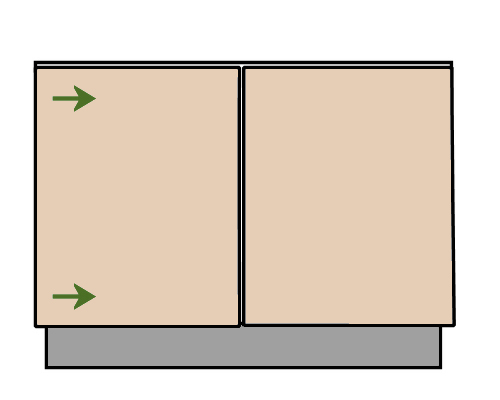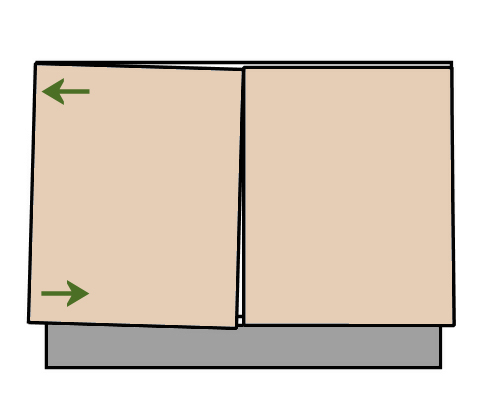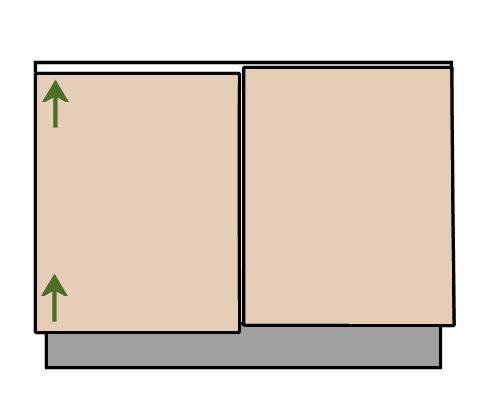Doors
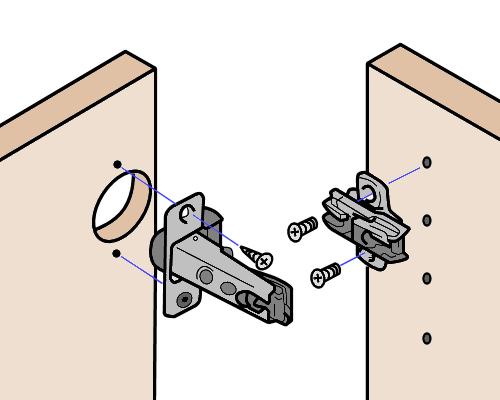 Audio for slide 1 (mp3 |6|KB)
Audio for slide 1 (mp3 |6|KB)
The hinge cup is inserted into a 35 mm hole, with the edge of the hole generally 3 mm from the door edge.
The mounting plate is fixed to the carcase, and the hinge arm is slid over the plate and locked into position.

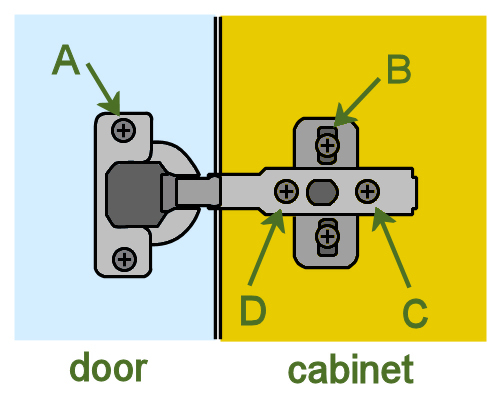 Audio for slide 3 (mp3 |6|KB)
Audio for slide 3 (mp3 |6|KB)
Adjusting the door
This drawing shows a typical concealed hinge with the door in an open position.
The functions of the screws are as follows:
A: fixed door screws - used to permanently fix the hinge cup to the door.
B: adjustable cabinet screws - fix the mounting block to the inside of the cabinet, and allow the doors to be adjusted vertically (up and down).
C: locking screw - used to lock the arm in place once any sideways adjustments have been made (note that it needs to be loosened before screw D can be turned)
D: adjusting screw - used to adjust the door horizontally (from side to side).

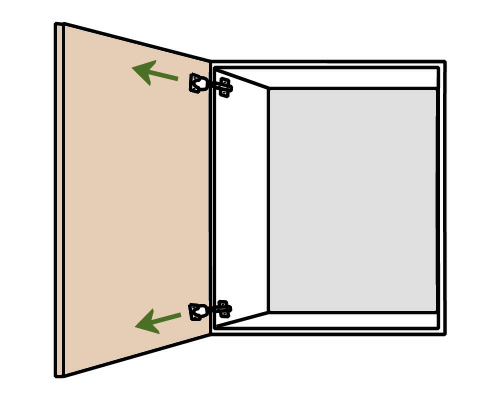 Audio for slide 6 (mp3 |6|KB)
Audio for slide 6 (mp3 |6|KB)
Retighten the screws and check to see whether it has fixed the bind.
Note that the gap only needs to be 1 mm between the door and the cabinet.


Learning activity
Audio 8 (mp3 |6|KB)The concealed hinges you use at work may be different to the example described above, because each manufacturer will have its own variations in design.
Write down the manufacturer and full product name of the main type of hinge you use for cabinet doors.
Briefly describe the method you use to fix the hinge to the door and carcase.
Share your answer with your trainer and other learners in your group.
You may take digital photos to help illustrate your answer.

 Go to Drawers
Go to Drawers
